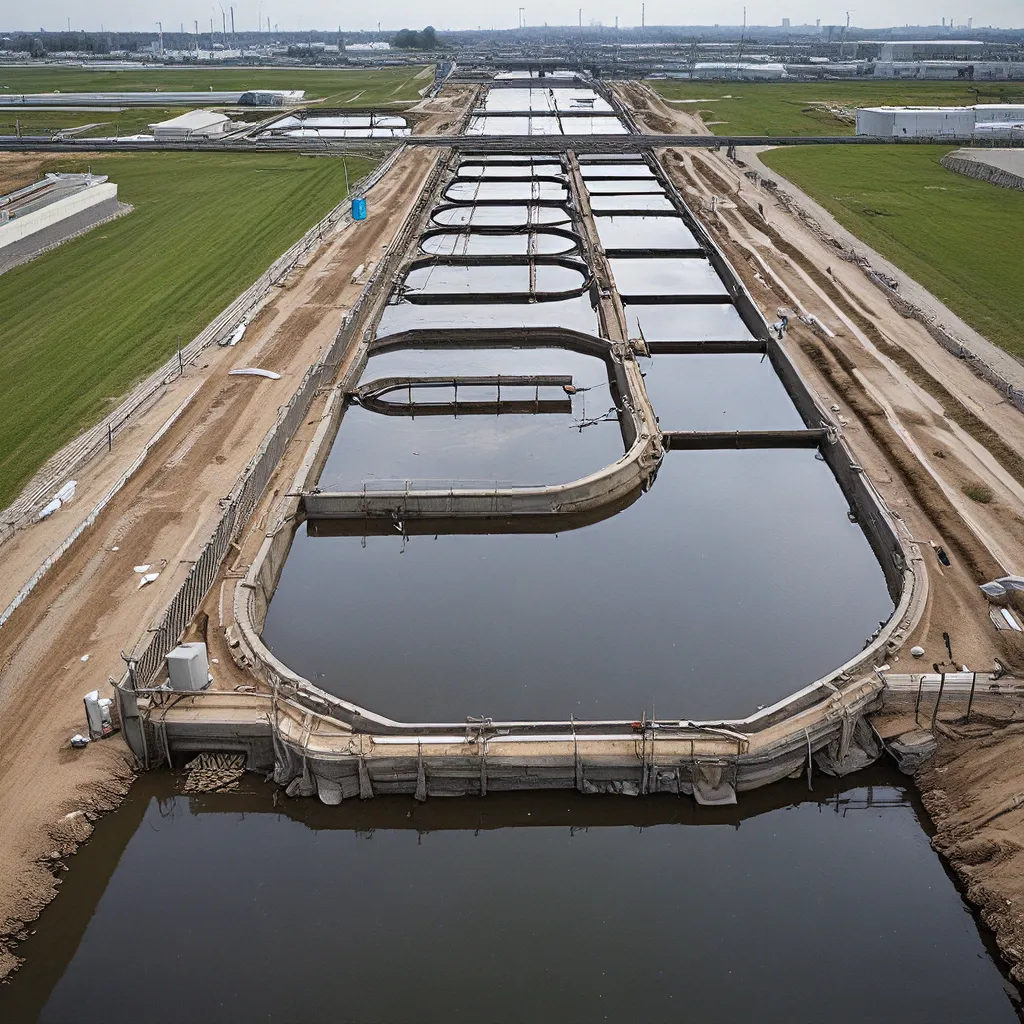
As someone who’s been navigating the ins and outs of the wastewater industry for years, I can tell you that it’s a complex and ever-evolving landscape. From the intricate web of regulations to the latest technological advancements, there’s always something new to discover. And let me tell you, it’s a fascinating world – one that’s crucial to the health and well-being of our communities.
The Regulatory Framework: Ensuring Environmental Compliance
In the state of Virginia, the regulatory framework governing septic tank systems is outlined in Title 12 of the Virginia Administrative Code, administered by the Department of Housing and Community Development. This comprehensive set of regulations covers everything from the design and construction of Alternative Onsite Sewage Systems (AOSSs) to the performance requirements and environmental safeguards that must be in place.
As the experts at Alcat Precast explain, this regulatory landscape is divided into five distinct parts, each addressing a critical aspect of septic tank systems. From prohibiting the presence of raw or partially treated sewage on the surface to specifying effluent dispersal and nutrient requirements, these regulations are designed to protect public health and the environment.
But it’s not just about the rules and regulations – it’s about accountability and transparency as well. Whenever sludge or solids are pumped or removed from septic tanks or treatment units, it’s mandatory to submit a comprehensive report to the local health department. This process ensures that the relevant authorities stay informed about the maintenance and condition of these crucial systems.
Navigating the Challenges: Compliance and Cost-Effective Solutions
Now, I know what you’re thinking – with all these regulations, it must be a real headache to keep up, right? Well, you’re not wrong. But the truth is, compliance is not optional; it’s a legal requirement. And trust me, the consequences of non-compliance can be pretty darn costly, from hefty fines to project delays and even legal liabilities.
But here’s the good news: there are innovative solutions out there that can actually save you thousands of dollars while helping you stay on the right side of the law. Take the Clearstream DA Models from Alcat Precast, for example. These 50% nitrogen-reducing units are TL-3 generally approved, meaning they meet the highest standards set by the authorities.
And if you’re in the market for a new septic system or need to replace an old one, you’re in luck. Alcat Precast offers a range of Clearstream models to choose from, with capacities ranging from 600 to 1200 gallons per day. Plus, you can access all the technical documents and manuals you need to make an informed decision.
Embracing the Future: Water Reuse and Regulatory Innovations
But the world of wastewater management doesn’t stop there. As we navigate through an era marked by climatic unpredictability and finite water resources, the adoption of water reclamation and reuse strategies is becoming increasingly important.
As the experts at Best Best & Krieger LLP explain, water reuse represents a transformative approach to water resource management, allowing communities to decrease their reliance on local surface and groundwater and preserve freshwater in natural habitats.
And the regulatory landscape is evolving to keep up. In some communities, like Scottsdale, Arizona, where water resources are particularly precious, water reuse-friendly policies have been implemented, generating annual revenues as high as $7 million by selling and reusing highly purified wastewater.
But it’s not just about the financial benefits. Water reuse also protects local ecosystems and provides water for irrigation, industrial processes, and even fire protection. And as the PFAS family of chemicals continues to be a concern, the overlap between PFAS treatment technology and water reuse systems can enhance operational efficiency and address both water scarcity and contaminants.
The Road Ahead: Overcoming Obstacles and Maximizing Opportunities
Of course, implementing water reuse initiatives is not without its challenges. Regulatory landscapes, available funding, and public support can all play a role in the pace of innovation. But with strategic planning, proactive communication, and a comprehensive approach, wastewater utilities and municipalities can navigate these obstacles and leverage the opportunities that water reuse presents.
As the experts at SL Environmental Law Group point out, strategic partnerships, alternative funding solutions, and even litigation against polluters can all be valuable tools in the quest for sustainable water management.
So, whether you’re a wastewater utility looking to invest in water reuse technologies, a municipality exploring ways to secure your community’s water future, or just someone who’s passionate about sustainability, there’s never been a more exciting time to be in the world of wastewater management.
Sure, the regulatory landscape may be complex, but with the right knowledge, resources, and innovative solutions, you can navigate it with confidence. And who knows, you might even have a little fun along the way!